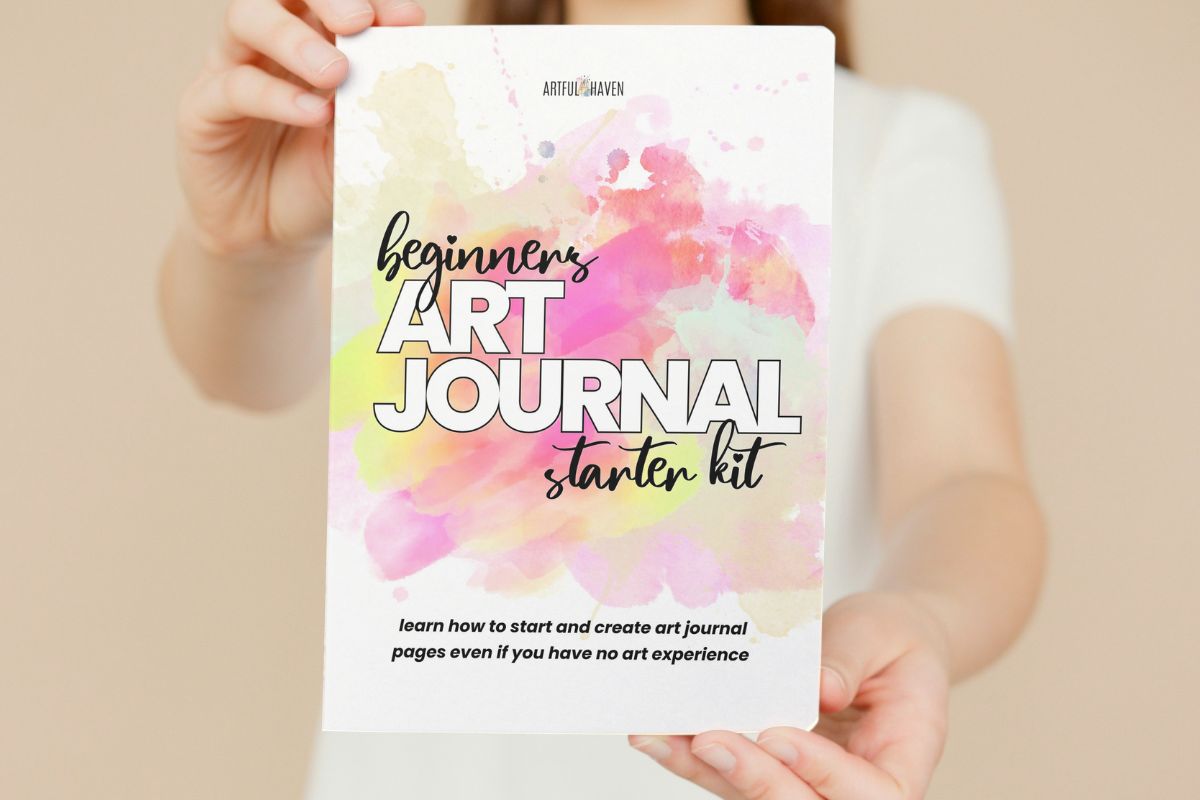Best Paper For Art Journaling – What Works And What Doesn’t
You’ve started art journaling but the paper you’re using gives you headaches? It curls? It bleeds? The paint acts weirdly and you can’t get the result you see everyone else is getting?
Love, you don’t have the right paper on your side. I’m sure your paints and pens are perfectly fine, and before you replace them, take a look at the paper you’re working on.
Disclaimer: Some links in this post may be affiliate links. This means that if you purchase something through that link, I get a small commission, at no extra cost to you.
Why paper matters
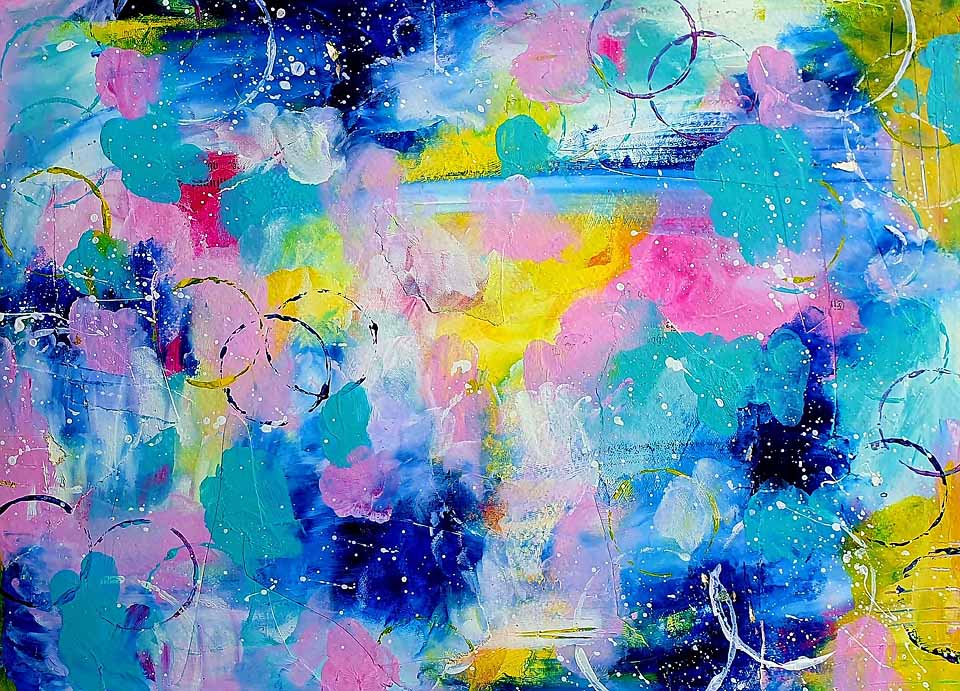
Here’s the thing. When you use very thin paper, it will bleed. Watercolors can’t stand this kind of paper. It’s impossible to use them on copy paper, for example. Anything that needs water, any medium, needs good paper, too. At least thick paper.
For example, if you paint on copy paper with acrylics or watercolors, the paint dries right away, there’s no chance for blending or layering. The paper is so thin it buckles, bleeds, and finally tears.
On the other hand, thicker papers (and there’s a lot of choices) absorb the paint slowly, letting you play with paint and giving you more time for blending and layering, etc. Not to mention, it just looks better. Way better.
Let me introduce you to what types of paper work for art journaling and which you should avoid like plague.
Types of paper that work
I have art journals with these kinds of papers and I use them for different purposes: watercolor, acrylics, just for drawing or sketching, for mixed media, collages, etc.
Don’t let this overwhelm you. You don’t need to have one journal for each purpose. When the paper is thick enough, you can use almost any paint on it.
Mixed media paper
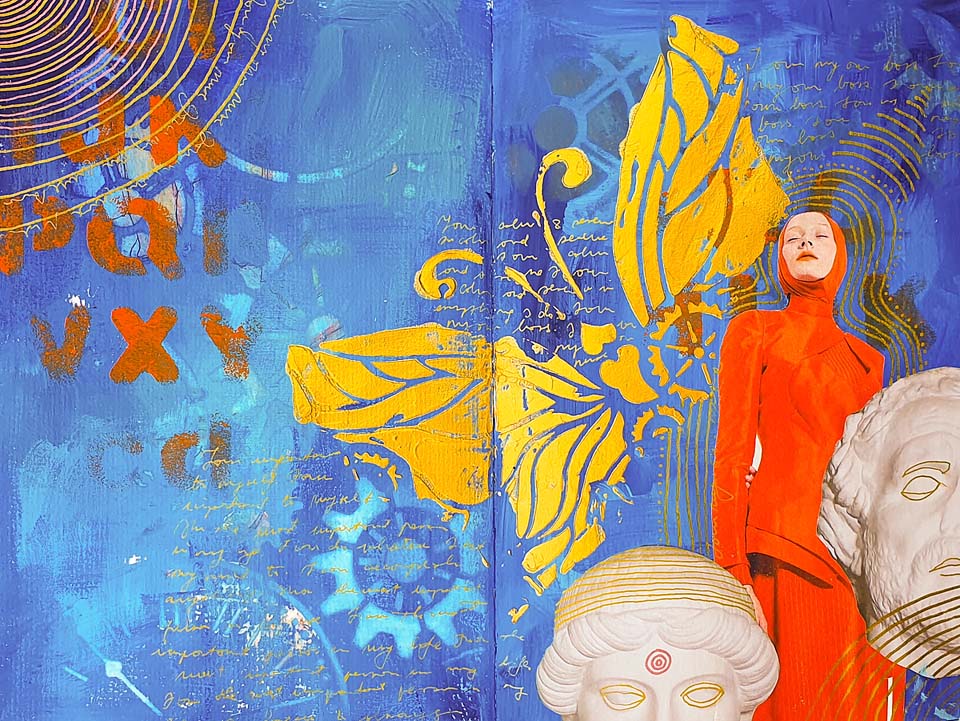
Mixed media paper is a thick kind of paper that can stand anything. You can add many layers of water and paint, and it won’t let you down.
This makes it a great choice for art journaling, allowing you to experiment with different techniques and materials on the same surface.
Mixed media paper is great for beginners because of this forgiving surface that can handle a variety of art mediums without easily warping or tearing. This allows you as a beginner to explore different techniques and experiment with various materials without worrying about ruining your paper.
Additionally, mixed media paper is often more affordable than specialty papers like watercolor paper, making it accessible for those just starting out in art journaling.
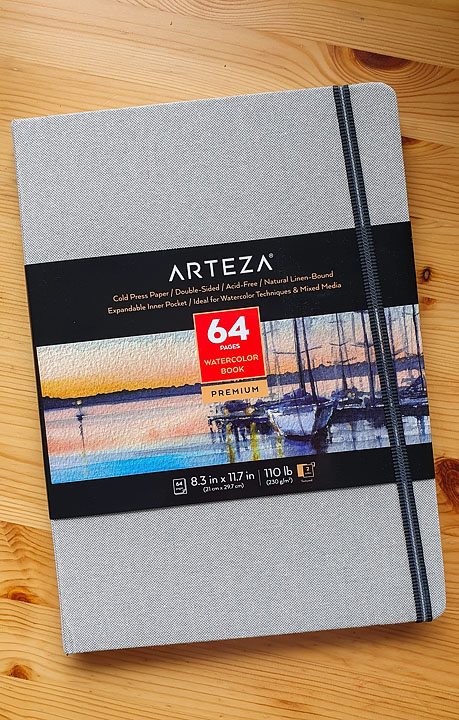
You can do mixed media on all kinds of thick paper, not just the ones marked as mixed media. For example, I use an Arteza watercolor journal (image above) and since the papers are very thick, I can use different media on it.
Another two great journals for this purpose are Marabu mixed media journals and Jane Davenport journals. I have both and they are amazing for many purposes.
Finally, one of the best and most affordable mixed media art journal I’ve tried and loved is by Sofie’s Art Supplies. It has thick papers, they’re smooth and can stand wet media.
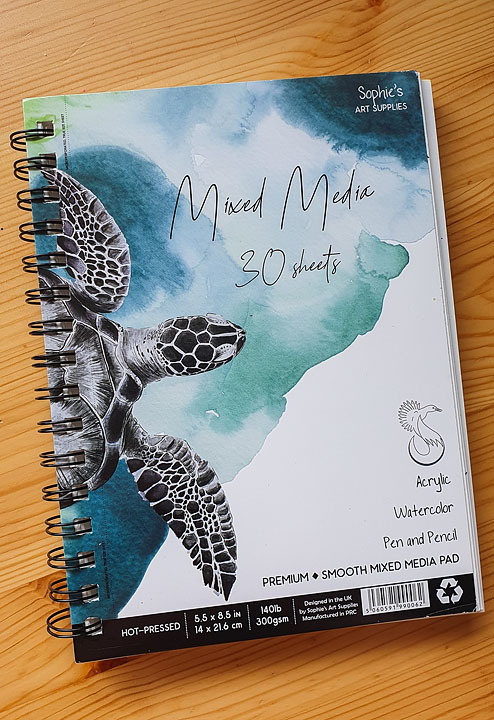
Watercolor paper
Watercolor paper is a specialized type of paper designed specifically for use with watercolor paints. It is typically made from cotton or wood pulp and comes in various textures, including rough, cold-pressed, and hot-pressed.
Watercolor paper is thicker and more absorbent than regular paper, allowing it to withstand the wetness of watercolor paints without buckling or warping. Its ability to hold water and pigment makes it ideal for creating vibrant, translucent layers of color in watercolor paintings.
If you can find a watercolor art journal, that’s your way to go. There are many choices online and in your local store, I’m sure. However, you can also find sheets of watercolor paper and bind them into a DIY art journal.
If you want to get into details, choose the thickness of 180 g and higher. 300 g watercolor paper is the best. It’s very thick and can deal with a lot of water (but not like a waterfall, so still be careful not to overdo it).

I already mentioned Arteza watercolor journals (photo above) and Jane Davenport watercolor ones (photo below). I enjoy them all the time and have no problem using watercolors. Even more, the paper in these journals makes the watercolor prettier, more colorful, and vibrant.
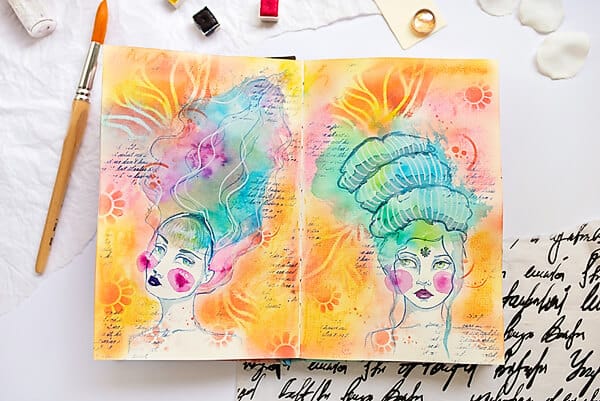
Moleskine watercolor notebooks or journals are also great for watercolor. And they offer a wide range of sizes and paper thicknesses.
Here’s basic info on the kinds of watercolor paper:
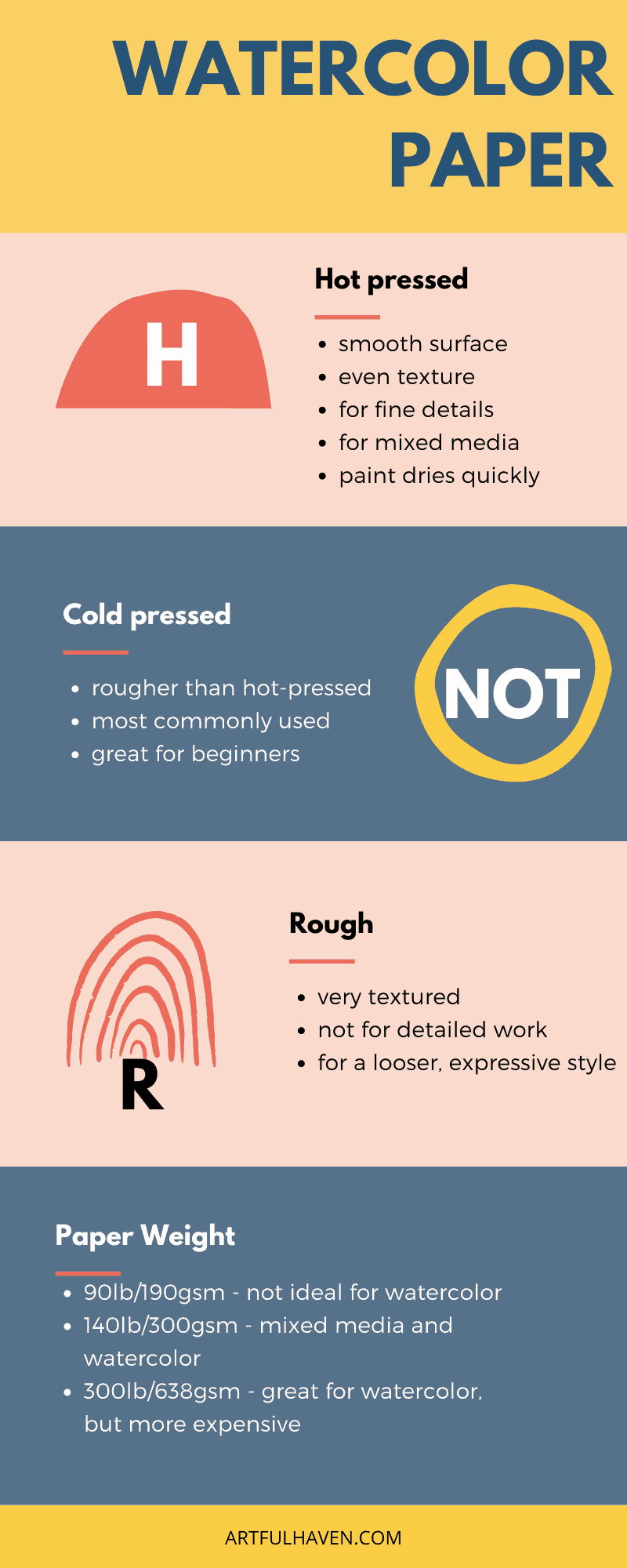
Sketching and drawing paper
Sketch paper is versatile for various media because it typically has a moderate weight and a smooth surface, allowing you to use a wide range of art materials. Its smooth texture makes it suitable for sketching with pencils, pens, and markers, providing a consistent surface for fine lines and details.
Additionally, sketch paper can also handle light washes of watercolor, acrylics, or ink without excessive buckling or warping, making it suitable for quick watercolor sketches or ink drawings.
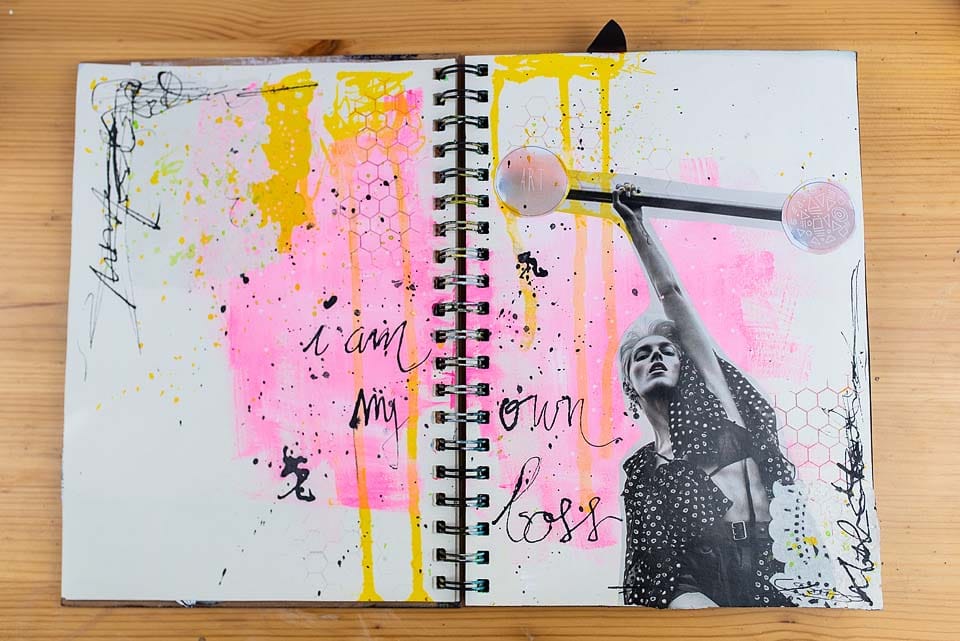
I love making collages on this kind of paper. It’s thick enough, it’s smooth and collage papers stick wonderfully. Plus, the glue doesn’t curl the paper.
However, if the sketchbook paper has a textured surface, collaging and using fine tip pens won’t work well. Fine tip pens work best on a smooth surface, so have that in mind. But markers work great on texture, especially Posca pens.
For beginners seeking practicality and affordability, there are several sketchbook options worth considering:
1. Canson XL Series Sketchbooks: Canson offers a range of XL series sketchbooks that are budget-friendly and come in various sizes and paper types, including sketch paper and mixed media paper. They are durable and versatile, making them suitable for a variety of mediums.
2. Moleskine Sketchbooks: Moleskine sketchbooks are known for their quality and portability. While they may be slightly pricier than some other options, they offer a durable cover and high-quality paper suitable for sketching with pencils, pens, and light washes of watercolor.
3. Arteza Sketchbooks: Arteza offers affordable sketchbooks with acid-free paper that can handle various dry media, including pencils, charcoal, and markers. They come in different sizes and bindings, making them suitable for artists of all levels.
What paper doesn’t work
In the image below, I used watercolor on plain printer paper. I couldn’t blend the paint, it dried right away and the paper is just…meh. You don’t want that.
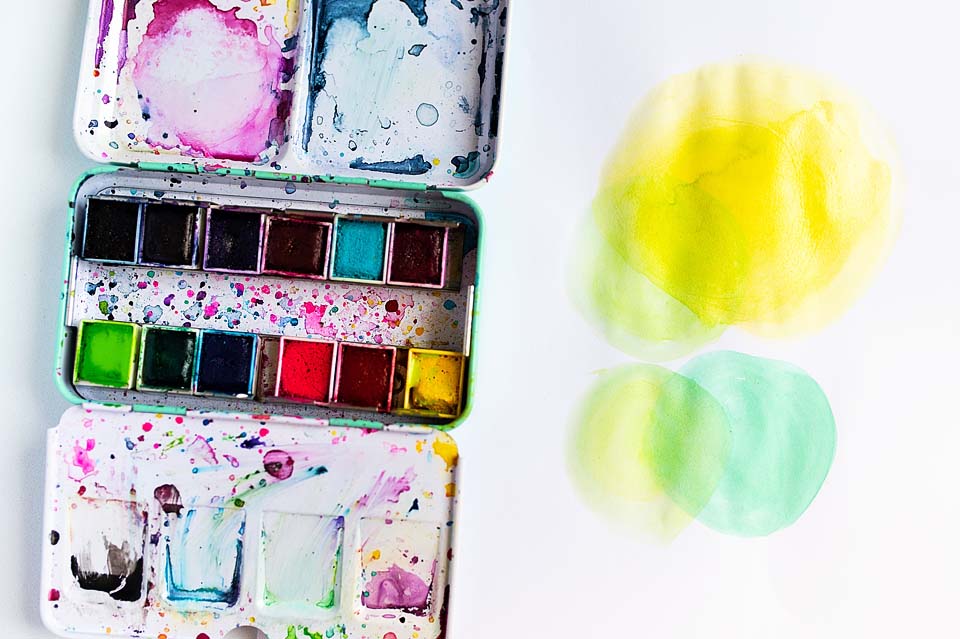
Copy paper and regular notebooks – avoid them
Copy paper is just for your printer. Or you can use it for light drawing and sketching, or for colored pencils. However, copy paper is crap for art journaling. It’s very thin and it bleeds, crumples, tears – you name it.
Markers look terrible on it and they bleed like crazy. Watercolor dries out in a matter of milliseconds and you can’t have all the goodness watercolor offers on this paper.
Even if you make it and your work looks decent, adding any wet medium will curl the paper, crumple it and even tear it in some places. You won’t be able to iron it out and all of this will frustrate you. In the image below, you can see how messed up this is.
This is the back of the copy paper. I used only a tiny bit of water and it changed the paper completely.

So give up on the copy paper for art journaling.
If you just can’t find or afford any other paper, you could glue two or three pages together so your pages are a bit sturdier. However, glue might curl it, too. Yeah, I know.
Tips for choosing paper for art journaling
In th image below, you can see the basic info almost all paper, journals, and pads have. Number of pages and page size is just a matter of preference, but the weight is the most important here.

1. Paper weight is important
Paper weight refers to the heaviness of a sheet of paper and is typically measured in pounds (lb – in the US) or grams per square meter (gsm – most other countries).
The higher the weight, the thicker and more durable the paper is. Lighter-weight paper is more suitable for sketching and drawing with dry media, while heavier-weight paper is better for wet media and mixed media techniques.
2. Paper thickness
Paper thickness is related to paper weight but refers specifically to the thickness of the paper. It is typically measured in thousandths of an inch (mils or points) or micrometers (microns).
Thicker paper tends to have a more substantial feel and can handle multiple layers of media without buckling or warping. Thinner paper, on the other hand, may tear or bleed with heavy wet media.
When choosing paper for art journaling, consider both the weight and thickness of the paper to ensure it can withstand the techniques and mediums you plan to use. Thicker, heavier paper is generally preferred for mixed media and wet media applications, while lighter-weight paper may be sufficient for sketching and dry media.
3. Texture – a matter of preference
Paper texture (sometimes) matters in art journaling because it influences the appearance and feel of the artwork, as well as how different art mediums interact with the surface. Here’s why:
- Texture adds visual interest to your art journal pages, creating depth and dimension. It can enhance the overall look of your artwork and make it more visually engaging.
- The texture of the paper affects how various art mediums, such as paint, ink, and pastels, stick to the surface. Rougher textures provide more tooth, allowing mediums (paint, ink) to grip the paper better, while smoother textures may be more suitable for fine detail work (pens, pencils, colored pencils, alcohol markers, etc).
- Different textures can produce unique effects when using certain techniques, such as dry brushing, scraping, or layering. For example, rough-textured paper can create interesting texture patterns in watercolor washes. Or if you color with colored pencils, the texture is clearly visible.

Choosing the paper texture for your art journaling depends on what you’re hoping to achieve or whether you’re just experimenting. However, don’t get overwhelmed. You don’t need to know all of this at once. Study the info a bit, experiment, and then decide what works for you and your needs.
4. Too much water is bad for any paper
Don’t fool yourself into believing that you can apply 10 wet layers on thick papers like mixed media or watercolor paper, and that they’ll stay the same.
You can break them too if you exaggarate with water and wet meidiums. So, just be careful not to overdo it. how much is too much? The more you experiment and actually use your supplies and paper, the faster and better you’ll learn these things.

5. Experiment with samples
You can always find separate sheets of paper: mixed media, watercolor or sketchbook. Then, get one sheet from each and do some experimenting.
Visit your local art supply store or craft store. Many stores sell paper sample packs or small packs of different types of paper for testing purposes. You can usually find these near the paper or sketchbook section.
What type of paper is the best for you?
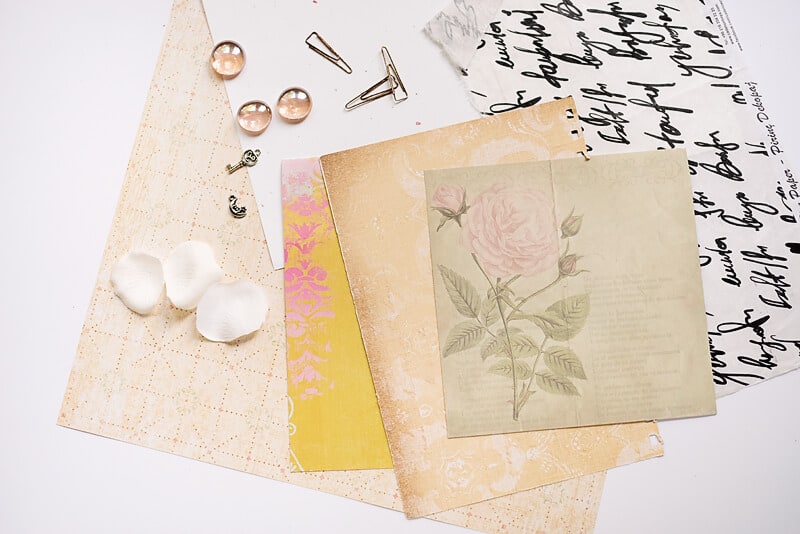
If I had to give you my top, ultimate advice on choosing paper for art journaling, I’d tell you to look at these two things:
- What’s the purpose of the paper: mixed media, watercolor, drawing, sketching, etc? Different papers are suited to different art mediums, such as watercolor, acrylics, markers, or pencils. Selecting the right paper lets your chosen mediums act in the way they should and give you the desired effects.
But you can use watercolor paper or heavy-weight setchbook for mixed media. Mixing things and experimenting is a key to undesrtanding how paper behaves.
- What’s the weight of the paper? The heavier the paper, the more media you can use on it (wet media). A sturdy paper will resist buckling, warping, and tearing, allowing you to create layered and textured artwork without worrying about damage.
Experimenting with different papers allows you to discover what works best for your creative process. If you know how to choose paper, you’ll be able to express yourself freely and enjoy your pages without frustration.
Make stunning ART
even if you’re a complete beginner
Download your free art journal kit and start creating wonderful pages in no time with this beginner’s guide. You’ll find amazing tips and steps for creating a page.
